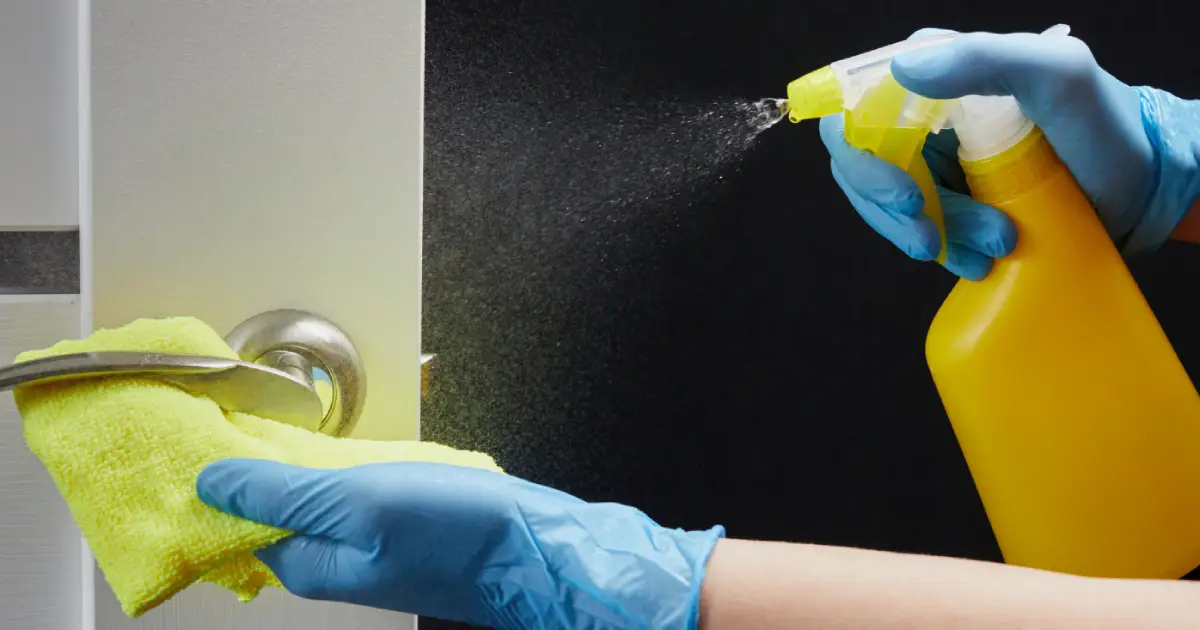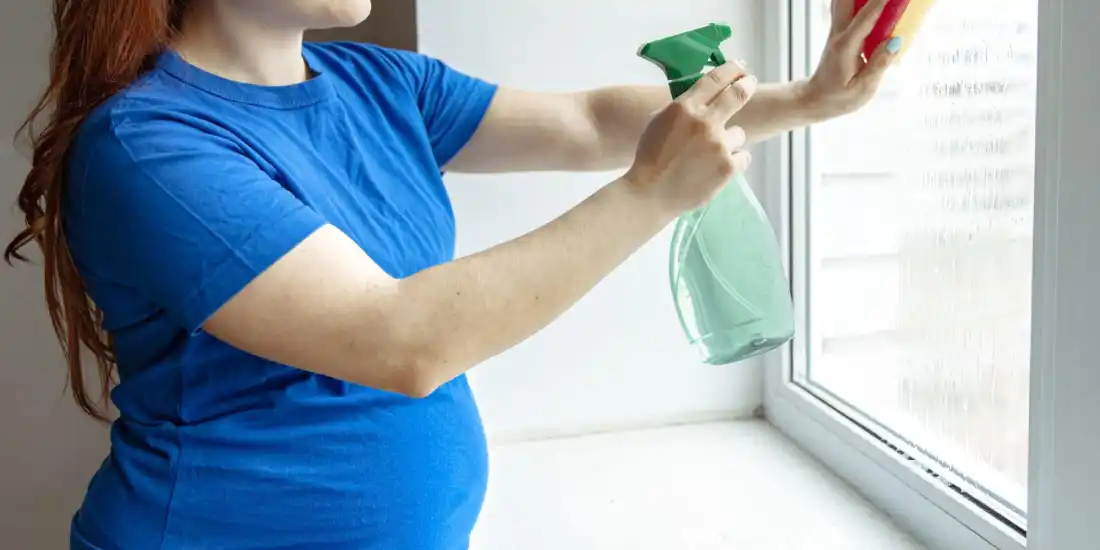
Introduction
Unpleasant odours can have a huge impact on the comfort and well-being of our living and working spaces. Whether it's residual smoke odours, pet odours, or strong industrial emissions, finding efficient odour elimination methods has become a top priority in both households as well as industries. By getting rid of odours, indoor air quality improves and the likelihood of allergies and respiratory problems decreases. A setting that smells clean and new improves comfort in general and makes a good first impression on visitors and guests. Implementing appropriate odour-elimination strategies is of the utmost importance for creating a living environment that is healthy, comfortable, and socially acceptable. Unpleasant smells can negatively affect health and well-being. Inhaling unpleasant smells can irritate the respiratory system, aggravating respiratory diseases including asthma and allergies. Strong, lingering smells can also give people headaches and make them feel nauseous or uncomfortable. Bad smells in the bedroom might interfere with sleep cycles and cause restlessness. Living in an unappealing environment can also increase stress and anxiety levels, and unappealing odours in work spaces or study rooms can impair focus and productivity. Long-term contact with certain smells can have a bad impact on mental health, causing irritation and an overall feeling of unhappiness. Therefore, addressing and getting rid of bad smells is essential for encouraging a healthier and more favourable living environment.
Common Sources Of Odours
To have an airy and pleasant indoor atmosphere, it is important to locate and eliminate the causes of odours. Odours can be effectively controlled with the use of air purifiers, odour-absorbing materials, and regular cleaning. Additionally, addressing leaks, practising good hygiene, and properly disposing of waste regularly will help eliminate the core causes of persistent odours. Depending on the location and particular activities occurring in the environment, common causes of odours in homes and interior spaces can change. Some of the most common sources are:
- Cooking and Food Preparation
- Garbage and Trash
- Pet Odours
- Tobacco Smoke
- Mold and Mildew
- Wet Paint and other Renovation Materials
- Pest Infestations
- Neglected HVAC Systems
Different Types Of Odours
We encounter odours frequently, and they might come from a variety of sources, each with distinctive characteristics of its own.
- Environmental odours are those that emanate from the surrounding region and include a variety of odours, including those from cooking, pets, tobacco smoke, mould, mildew, rubbish, and outdoor pollution.
- Industrial fragrances come from factories, manufacturing processes, and chemical plants, and are frequently characterised by strong, disagreeable odours because of the substances involved.
- Chemical odours are caused by the discharge of particular chemicals that are present in commonplace goods like solvents, paints, and home cleaners, each of which has a distinct and recognisable smell.
- Natural scents are produced by nature itself and can be found in forests, oceans, and mountains. These environments are home to several different natural substances that are responsible for these odours.
- Biological odours arise from living organisms and are diverse, including human body odours, animal communication scents, and natural aromas from plants and flowers in nature.
Understanding Odours
Olfaction, or the sense of smell, is a complex mechanism that enables humans to recognise and experience different odours. We inhale odorant molecules into our nasal passages, which is the first step in the process. The nasal cavity's specialised olfactory receptors then cause nerve impulses to be sent to the brain via the olfactory nerve. These signals are processed by the brain, which then recognises that particular odour. Beyond the other senses, our sense of smell, along with the capacity to recognise and interpret these different odours, enhances our experiences and strengthens our connections to the environment. The wide variety of smells we experience gives depth and complexity to our perception, affecting our emotions, memories, and general well-being.
Different factors can cause certain odours to linger longer than others. If the chemicals that make up an odour are less volatile, they tend to remain longer. The duration of an odour can also be prolonged or shortened depending on environmental factors like temperature and humidity that impact the rate of evaporation. Odours can also be trapped in porous surfaces, which makes them persist in closed spaces. How long odours remain also depends on factors like concentration, personal sensitivity, chemical stability, and ventilation efficiency. Managing and controlling odours for a more pleasant interior atmosphere can be accomplished by being aware of these factors.
Preparing for Odour Removal
A systematic and thorough approach is needed to prepare for odour removal to properly address the source of the offensive odours and produce a clean and fresh interior atmosphere. The main steps of the procedure are as follows:
Identifying the source: Finding the source of the odour is the first step in odour elimination. To identify the source of the odour, carefully examine the area and surroundings. Garbage cans, pet areas, wet or mouldy patches, dirty carpets, and unwashed clothing are a few examples of common sources.
Ensuring proper ventilation: Removing odours from indoor places requires adequate ventilation. Open the windows and doors to let fresh air in and help with neutralising the scent. To get rid of foul air and bring in fresh air from the outside, use exhaust fans in rooms like the kitchen and bathroom.
Pre-cleaning surfaces and areas: It is important to first clean surfaces and affected areas before attempting any specialised odour removal techniques. Any visible dirt, debris, or spills that can contribute to the scent should be cleaned up with the proper cleaning supplies. This procedure helps odour elimination techniques to work more effectively by preventing odour molecules from being stuck in porous materials.
Odour-specific treatments: Targeted remedies can be used depending on the type of odour once the source has been located and pre-cleaning is finished. For instance, cooking odours can be eliminated by simmering citrus peels and spices or boiling a solution of water and vinegar or using enzyme-based cleansers to get rid of persistent pet odours. These focused strategies guarantee a clean and fresh indoor atmosphere that is especially suited to battle each kind of odour.
Natural Odour Removal Techniques
Natural odour-eliminating procedures are efficient and eco-friendly ways to get rid of bad odours from indoor environments. Some natural methods that you can employ are described below. It's important to keep in mind that while these natural scent elimination methods work well for mild to moderate odours, they could not get rid of overpowering or lingering smells. In these situations, it's essential to locate and deal with the odour's primary source, and if extra cleaning or consider using expert cleaning services if required.
Baking soda: Sodium bicarbonate, sometimes known as baking soda, is a fantastic natural deodorizer. It can neutralise and absorb scents. Simply sprinkle baking soda on carpets, fabrics, or upholstery, or set an open container of baking soda there, and let it sit for a few hours before vacuuming.
Activated charcoal: This is yet another effective natural odour absorber. Because of its porous nature, scent molecules are captured and absorbed. Place bowls of activated charcoal in locations where scents persist or hang activated charcoal bags in closets or close to the source of the odour.
Vinegar: White vinegar is renowned for its antibacterial and deodorising qualities. It is useful in eliminating a variety of odours, including odours from cooking and pets. Spray the affected surfaces with a solution made by combining equal parts water and white vinegar in a spray bottle. Let it sit for a while before cleaning it all up. Combining vinegar with baking soda can make an even better cleaning solution.
Lemon and citrus: Citrus fruits, such as lemons, oranges, and grapefruits, naturally can freshen the air and eliminate odours. Citrus peels can be used to freshen the air by placing them in the sink, garbage disposal, or other areas where odours are likely to develop.
Essential oils: Several essential oils have appealing scents that can be used to cover up or eliminate odours. To make a natural air freshener, mix a few drops of water with essential oils like lavender, eucalyptus, peppermint, or tea tree in a diffuser or spray bottle.
Coffee grounds: Used coffee grounds can absorb and eliminate odours. Place dried coffee grounds in an open container in the refrigerator or other areas with unpleasant smells. Don’t forget to remove it after a few hours.
Fresh air and sunlight: Nothing helps better with odour removal than fresh air and sunlight. Open windows and doors to let fresh air flow and drive off stagnant odours. By dissolving organic substances, sunlight can aid in the removal of unpleasant odours while free-flowing air carries these odours away.
Homemade scent absorbers: In little fabric pouches, combine products like baking soda, fragrant essential oils, and dried herbs to make your natural scent absorbers. Put these pouches in closets, drawers, or other places where smells tend to linger.
Commercial Odour Removal Products
Sometimes, odours can be quite strong, which means natural remedies can have little to no effect in removing them. Commercial odour removal products are specially made to combat different kinds of odours and offer quick and efficient treatments. These products frequently include specific ingredients and technologies that aid in masking, absorbing, or neutralising scents. It's important to adhere to the directions and safety precautions provided by the manufacturer while using commercial odour-elimination products. Here are some popular commercial odour removal products:
Deodorizers and air fresheners: Air fresheners are available in a variety of forms, including sprays, aerosols, gels, and plug-in diffusers. They emit fragrant substances that help cover up or hide unpleasant odours. Deodorizers may additionally contain substances that break down scent molecules, hence lessening their concentration in the air. Odour absorbers: These function by absorbing and retaining scent molecules. They are frequently found in the form of activated charcoal or bamboo charcoal products. Small pouches or containers filled with them can be placed in places with lingering odours like closets, shoes, and refrigerators to remove or prevent odours.
Odour eliminators: These items are designed to get rid of odours at the exact source. These could contain natural bio-based compounds or enzymes that break down the organic material—such as pet stains or food spills—that is the source of the scent. For getting rid of pet odours, enzyme-based cleaners are especially useful.
Odour neutralizers: These work by chemically altering the structure of odour molecules to make them undetectable or less pronounced. They remove scents from the air rather than masking them. The employment of ozone generators in commercial settings is one example, however, due to potential health dangers, they must be utilised judiciously.
Fabric refreshers: These products are made up of chemicals that are effective in getting odours out of clothes, curtains, carpets, and other textiles. They often come in the spray or foam form and can swiftly refresh garments without washing them.
Odour control granules: These are absorbent granules that can be dusted on carpets or other surfaces to absorb and neutralise odours. They are mostly helpful in getting rid of odours brought on by pet accidents or other spills.
Commercial air purifiers: These high-quality air purifiers equipped with activated carbon filters are capable of successfully eliminating odours from the air. By absorbing and trapping smell molecules, these filters leave the air clean and fresh.
Industrial-strength odour removers: For challenging odour issues in big or commercial locations, industrial-strength odour removers and treatments might be necessary. Using these products requires implementing many precautions as well as careful handling by experts.
Deep Cleaning for Odour Removal
Deep cleaning is a thorough and efficient method for getting rid of odours that linger in indoor environments. It requires careful planning, ventilation, and correct identification of the odour's source. To remove odour-producing particles that have been trapped, surfaces and materials are thoroughly cleaned using vacuuming, steam cleaning, and laundering. Natural therapies for scent neutralisation include enzyme cleaners, vinegar solutions, baking soda, and activated charcoal. Odour molecules can also be removed from the air with the use of air purifiers with activated carbon filters. In addition to tackling mould and mildew problems, deep cleaning includes identifying hidden areas with lingering odours. Deep cleaning is a powerful technique for removing odours at their source and can be time- and effort-consuming, but it can provide a fresh and welcoming indoor environment. For the best deep-cleaning results, it's wise to hire the services of professional house cleaners.
Conclusion
Effective odour removal techniques are essential for preserving a pleasant and cosy interior atmosphere. Selecting the best strategy for removal requires an understanding of the sources and characteristics of smells. Natural odour-removal methods, like those that involve baking soda, vinegar, citrus peels, and activated charcoal, provide secure and environmentally beneficial substitutes for synthetic treatments. Successful and long-lasting scent removal depends on proper ventilation, regular deep cleaning, and addressing the underlying causes of odours. People can create a fresh, odour-free environment that improves their general well-being and quality of life by combining natural remedies and commercial products as appropriate.

Professional Cleaning Services in Gold Coast
book now
Recent Posts
-
![Comprehensive Guide to Bond Cleaning with Ozclean]()
A Comprehensive Guide to Bond Cleaning with Ozclean
January 18, 2024
Admin
-
![blog-thumbnail]()
-
![blog-thumbnail]()
The Complete Guide to Dog Hair Removal from Office Carpets
December 28, 2023
Admin
-
![blog-thumbnail]()
Winter Cleaning Tips For Outdoor Spaces
August 03, 2023
Admin
-
![blog-thumbnail]()
Robotic Vacuums: Advantages And Disadvantages
April 14, 2023
Admin
-
![blog thumbnail]()
Tips For Cleaning Your Kitchen Efficiently And Effectively
March 30, 2023
Admin
-
![blog-thumbnail]()
Room-by-Room Cleaning Checklists for an Efficient Clean
March 08, 2023
Admin
-
![blog-thumbnail]()
Effective Ways To Remove Rust Stains From Bathtub
January 31, 2022
Admin
-
![blog-thumbnail]()
5 Effective Carpet Cleaning Hacks
January 10, 2022
Admin
-
![blog-thumbnail]()
5 Cleaning Tips For Pregnant Ladies
December 27, 2022
Admin
-
![blog-thumbnail]()
6 Tips To Choose The Ideal Vacuum Cleaner For Your Car
December 13, 2022
Admin
-
![blog-thumbnail]()
5 Benefits When You Chose Professional Roof Cleaning
May 03, 2022
Admin


















